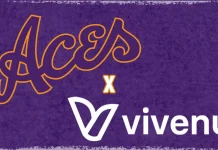Indiana Dead Last In Voter Participation, Change Needed
In 2014, only 28 percent of registered voters actually cast ballots, making Indiana last in the nation in turnout. Gregg’s six-point plan, originally released in September of 2015, seeks to make voting easier through common sense reforms.
“Partisan politics has made it harder for Hoosiers to participate in our own government,†said Gregg, a former university president and Speaker of the Indiana House. “We have some of the shortest voting hours in the nation, there are cumbersome requirements to register and to vote and now it takes a signed affidavit to vote by mail. On top of all that, the General Assembly continues to pass laws to make voting even more difficult every year.â€
“I’m running for Governor because I believe Indiana is stronger and better when every Hoosier has a seat at the table and is called upon to participate,†Gregg added. “And increasing the number of citizens voting is the best way to accomplish that.â€
Through his “Voter Participation Plan,†Gregg pledged to work with the Secretary of State and members of the Indiana General Assembly to enact a series of measures to encourage more Hoosiers to vote, with the goal of increasing voter participation in Indiana to 75 percent by 2020. Those reforms include:
• Extending Polling Hours: With Hoosiers working longer and harder than ever, getting to a polling location between the hours of 6 a.m. and 6 p.m. is impossible for many. Hawaii and Kentucky are the only other states with such restrictive voting hours, and Indiana can and must change that. Gregg’s proposal calls for extending the hours in which polling places are required to remain open from 6 p.m. until 9 p.m. on Election Days to allow three more hours to vote.
• Automatic Voter Registration: Following other states’ lead, Gregg’s plan also calls for automatically registering all eligible U.S. citizens who have an Indiana driver’s license or have utilized services offered by state government, unless they choose to opt out. According to numbers maintained by the State’s Elections Division, there are just over 396,000 eligible Hoosiers who are not currently registered to vote. This change would allow them to cast ballots and it would also eliminate the need for Hoosiers to register 29 days before the election in order to participate.
• Expanding Acceptable forms of Voter Identification: Preventing voter fraud in our elections is important – but so is allowing eligible citizens to exercise their constitutional right to vote. Under Gregg’s proposal, Indiana would expand the forms of acceptable identification for the purposes of voting to any identification issued by local, state or the federal government or an Indiana college or university, even if they do not contain an expiration date. Current utility bills, bank statements, paychecks or other government documents that list the name and address of the voter would also be accepted. Indiana driver’s licenses, state identification cards and passports are among the few forms of identification that are now considered acceptable – even members of the military who don’t have an expiration date on their ID cannot currently use them as acceptable identification.
• Expanding Early Voting: In addition to expanding voting hours, Gregg would work to ensure that Hoosiers would be able to go to their county clerk’s office and satellite voting centers at least 30 days before an election, including weekends. Each county would designate at least three satellite voting centers – be they in state or local government offices or elsewhere – where Hoosiers could cast their ballots early. These would be in addition to normal Election Day polling locations. Hoosiers would also be able to register the same day as they early vote.
• Expanding Opportunities to Vote by Mail: As done in several other states, Gregg is also proposing that Hoosiers be given the opportunity to cast an absentee ballot without signing an affidavit saying they can’t make it to the polling location on Election Day. The current process deters voters from utilizing this easy option. By reversing it, more Hoosiers will vote.
• Creating an Independent Redistricting Commission: A significant reason many Hoosiers don’t bother to vote is they feel their votes don’t count – and because of gerrymandering, many of them are correct. In Indiana, only a small fraction of Congressional and Statehouse seats are considered competitive. Of the 125 seats up for election in 2014, almost half had no opponent. And many of those seats that were contested were decided by wide margins. Gregg would create an independent redistricting commission to draw district maps based on legitimate legal factors, but exclude partisan and incumbent protection considerations.
“These proposals are just a starting point. Some may work, some may not, and there certainly will be other ideas to add to this list. The point is this: we must try to address this crisis before it gets any worse,†concluded Gregg.
John Gregg has worked throughout the public and private sector. He served as President of Vincennes University, Speaker of the Indiana House of Representatives, worked for two Fortune 500 companies and is a practicing attorney today. Gregg holds an associate’s degree from Vincennes University, a bachelor’s degree from Indiana University, a master’s degree from Indiana State University and a law degree from Indiana University. He and his wife, Lisa, have three adult children and live in Sandborn in Knox County.
For more information on John Gregg or his campaign for Governor of Indiana, please visit www.greggforgovernor.com or call 317-510-1876.





Lame continued Democratic attempts to allow the “undocumented” to vote. This quote is unintentional funny:
“The point is this: we must try to address this crisis before it gets any worse,†concluded Gregg.”
Comments are closed.